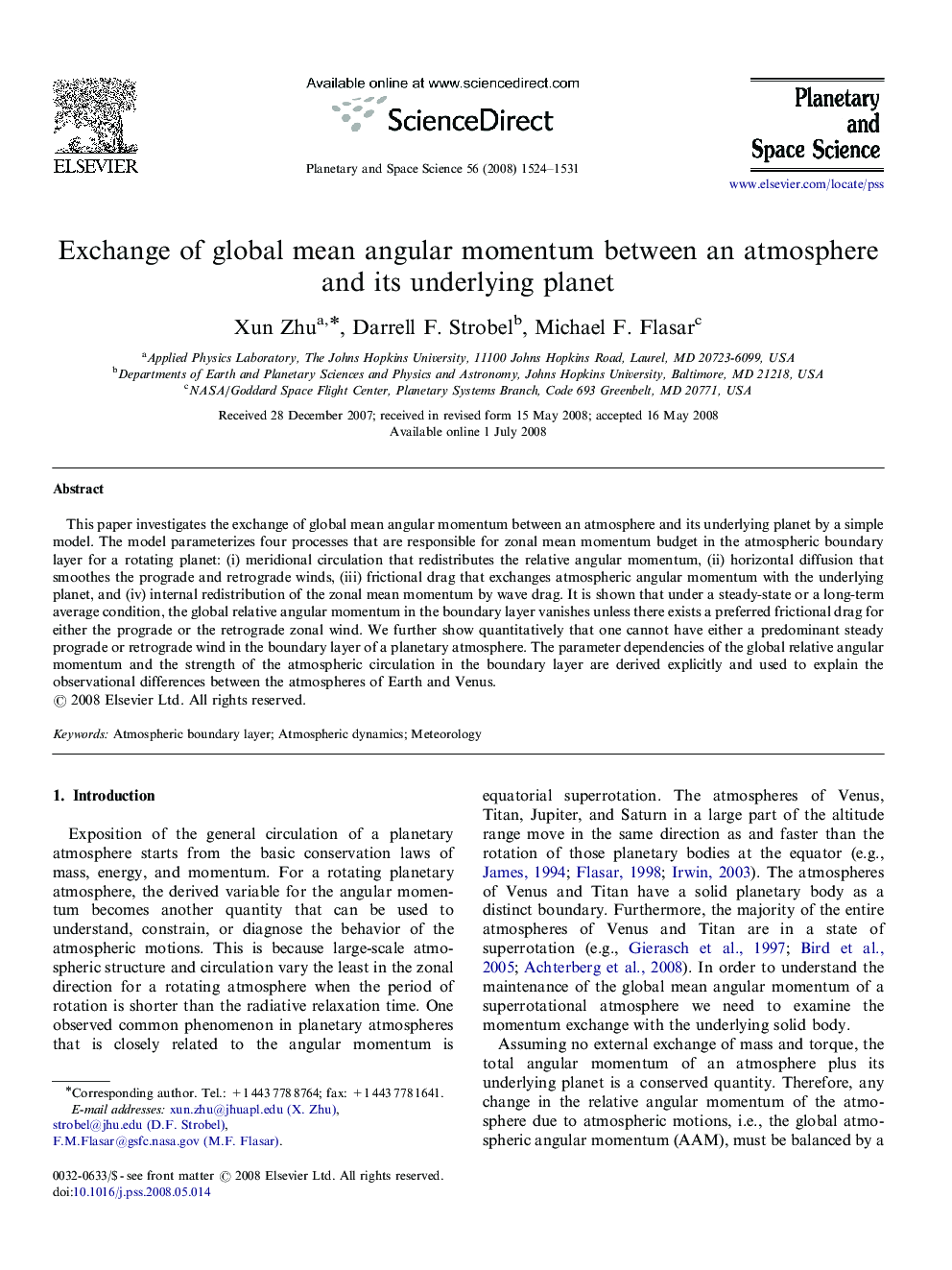| Article ID | Journal | Published Year | Pages | File Type |
|---|---|---|---|---|
| 1782248 | Planetary and Space Science | 2008 | 8 Pages |
Abstract
This paper investigates the exchange of global mean angular momentum between an atmosphere and its underlying planet by a simple model. The model parameterizes four processes that are responsible for zonal mean momentum budget in the atmospheric boundary layer for a rotating planet: (i) meridional circulation that redistributes the relative angular momentum, (ii) horizontal diffusion that smoothes the prograde and retrograde winds, (iii) frictional drag that exchanges atmospheric angular momentum with the underlying planet, and (iv) internal redistribution of the zonal mean momentum by wave drag. It is shown that under a steady-state or a long-term average condition, the global relative angular momentum in the boundary layer vanishes unless there exists a preferred frictional drag for either the prograde or the retrograde zonal wind. We further show quantitatively that one cannot have either a predominant steady prograde or retrograde wind in the boundary layer of a planetary atmosphere. The parameter dependencies of the global relative angular momentum and the strength of the atmospheric circulation in the boundary layer are derived explicitly and used to explain the observational differences between the atmospheres of Earth and Venus.
Related Topics
Physical Sciences and Engineering
Earth and Planetary Sciences
Geophysics
Authors
Xun Zhu, Darrell F. Strobel, Michael F. Flasar,
